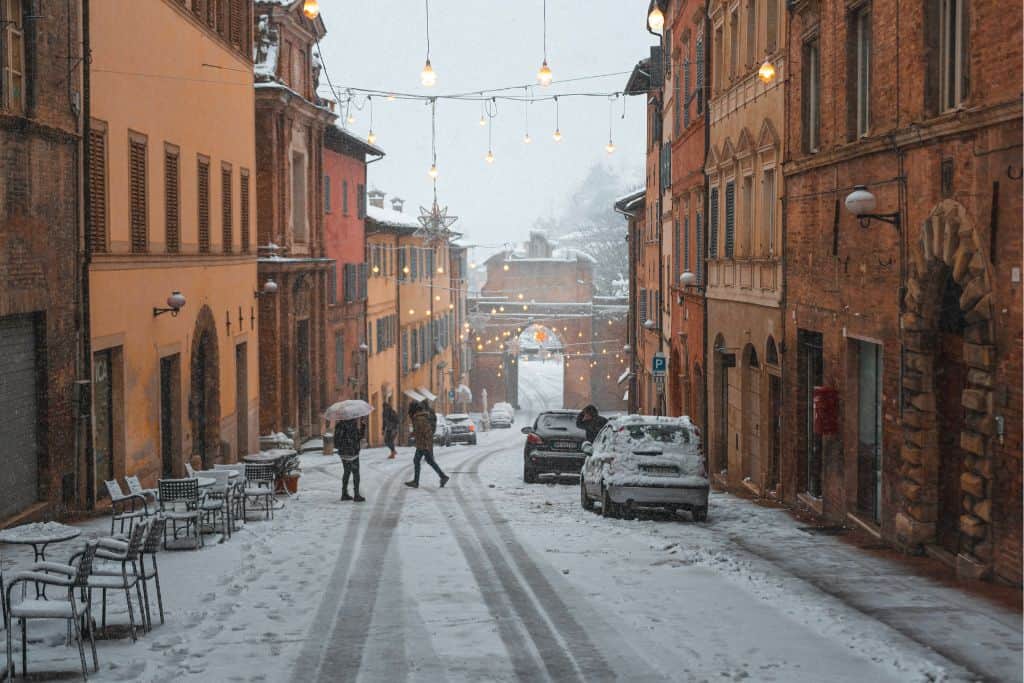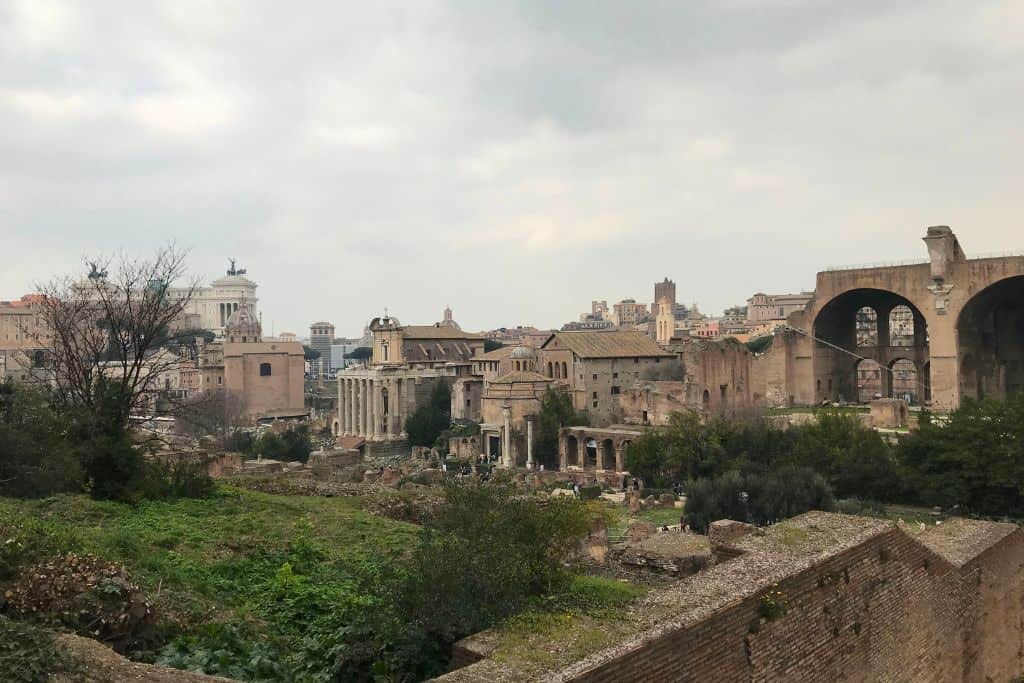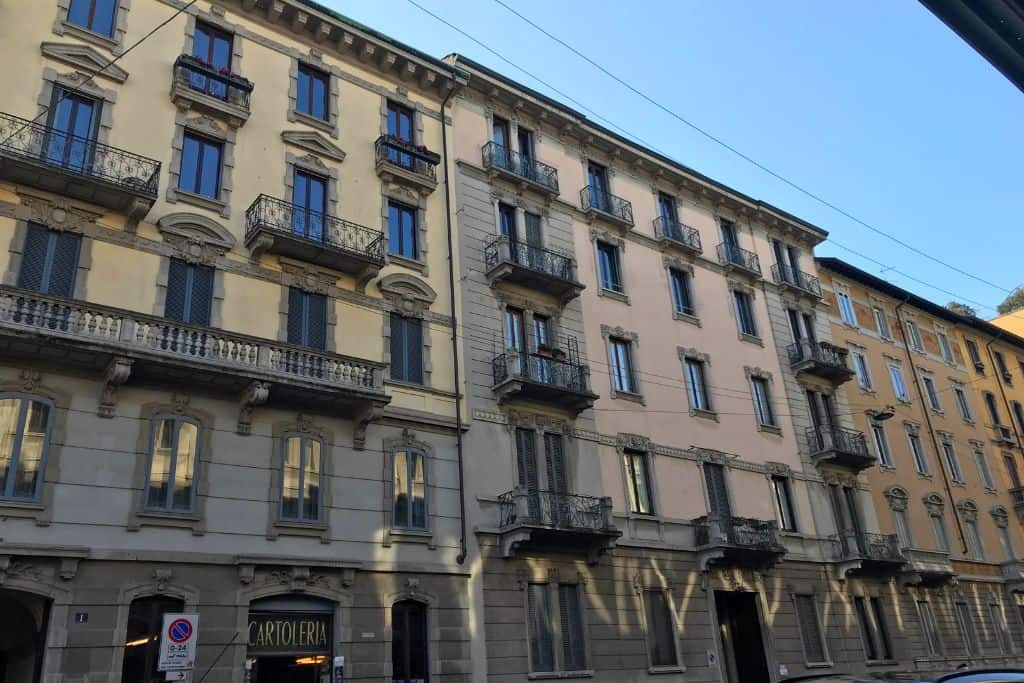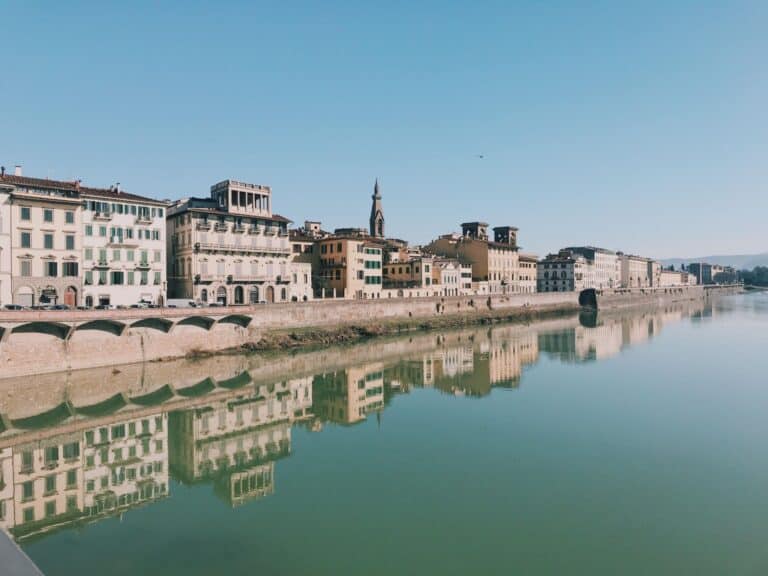Does It Snow In Italy? What To Know For Your Visit
Are you planning a winter vacation to the European gem and asking yourself, “Does it snow in Italy”?
If so, you’ve come to the right blog. To get the point, the answer is yes. It does snow in Italy but with some conditions.
Before you continue reading this detailed guide, you should know a few essential things about Italy’s landscape, weather patterns, regions, and seasons.
First, the country of Italy itself is massive – 116,347 square miles, to be exact. As you might imagine, it’s divided into four regions: the north, center, south, and the islands. Because of this, snowfall in Italy is entirely region and season-dependent.
So, if you’re still wondering if visiting Italy in winter is the right decision for you, read below to learn everything you need to know about snow in Italy, including how often it snows, where it snows, and when.
Going On A Trip To Italy? Check Out These Resources!
🛌 Accommodations: I always use Booking.com for my lodging.
🚘 Car Rentals: To find the best prices, I use Discover Cars!
✈️ Flights: To find great flight prices, I check on Skyscanner.
📍Tours: I use Viator to find memorable experiences.
Does it Snow in Italy?
As you read previously, yes, it snows in Italy in winter — and probably more often than you think! Snowfall is expected in the country’s mountainous northern region – including the Italian Alps, the Dolomites, and the Aosta Valley bordering France and Switzerland.
The winter season in this part of Italy usually begins in early December and lasts until early April.

During this period – especially in December and January – you can expect snow and temperatures that often drop below freezing, especially at higher altitudes. In fact, it’s the main reason skiing in Italy is one of the most popular winter pastimes.
What’s the Climate like in Italy?
Due to its size and diverse landscapes, Italy’s climate is varied and can be unpredictable. Italy might be known as the mecca of the Mediterranean, but the differences in climate between the northern and southern regions are as different as night and day.
Italy in Winter
While Italy is a fantastic destination to visit year-round, some factors must be considered before you touch down. If you’re visiting Italy in Winter, the winter months create a powdery playground for avid skiers.
On the other hand, if you’re seeking warmer weather, an ocean breeze, and plenty of sunshine, you may want to stick to the islands.
How cold is Italy in winter?
Temperatures in the winter vary depending on the region. For example, temperatures can reach the upper 40s to mid-50s on the islands and in the southern part. In the northern region’s Po Valley and cities like Milan and Venice, temperatures can drop into the upper 20s or low 30s Fahrenheit.
The coldest months in Italy are January and February, where certain regions can experience an average temperature of 23°F (-5°C).
Italy in Spring
If you want to experience Italy during warmer months without the swarms of tourist crowds, visiting from late March to late May is the time to do it. Spring in Italy can be unpredictable but nothing short of magical.
The Spring months bring longer hours of sunshine and snowmelt from mountains and lakes that give way to blankets of wildflowers on rolling hills.

Aside from potential snowfall in the northern mountainous region, overall temperatures and weather patterns are enjoyable. However, keep in mind that rain will often replace snow during the spring months. Depending on the area you’re visiting, rainfall can often come in unforeseen yet intense spurts, so it’s best to pack a poncho or sturdy umbrella.
With all of the rain, this season, known as “Primavera” in Italian, brings new life to towns and cities throughout the country. Average temperatures during the spring range from a high of 66 degrees Fahrenheit (19°C) on the Amalfi Coast to a low of 44°F (7°C) in the Lake region. And if you’re wondering, “Does it snow in Italy in Spring”? The answer: unlikely!
Italy in Summer
Italian summers are what dreams are made of. The summer months are when Italians – and Europeans in general – take their family vacations. From the islands’ turquoise waters to the ancient ruins of Rome and beyond, summer gives visitors a chance to experience it all.
In the northern region, there is very little snowfall, if any, in summer. Even the northern regions can experience intense heat waves during these months. Overall, summer temperatures in Italy average above 75°F (24°C).
For reasons of comparison, average temperatures range from a high of 86°F on the island of Sardinia to a low of 62°F (17°C) at Lake Como. July and August bring peak temperatures in Italy, which means more tourists, so be prepared for summer crowds!
Italy in Fall
Many people consider the fall months from mid-September to mid-November to be the “sweet spot” for visiting Italy. Why, you ask? First, the weather is much more relaxed than in the summer, but not as cold as winter.
Second, crowds are almost non-existent. In September, temperatures often mirror August’s but cool off significantly at night. In October and November, temperatures throughout the country are mild and pleasant, rarely falling below 50°F (13°C).
What Months Does it Snow in Italy?
If you’re wondering, “Does it snow in Italy?” you’re probably also wondering when it snows in Italy! Weather patterns indicate most of Italy’s snowfall occurs in the northern mountainous regions from November to January. Cities like Milan, Turin, Bologna, and Lake Como have moderate winter snowfall.

In fact, Turin is considered one of the snowiest places in the country and one of the best places for skiing in Italy! However, cities like Rome and Florence might only get an occasional flurry as they are further from the mountains.
What is the Coldest Month in Italy?
This may come as no surprise, but January is the coldest month in Italy! Temperatures during the month can reach as low as 30°F (-1°C) in the northern regions. The higher the altitude, the colder the temperature – which often means more snow!
To prepare for the elements, dress warmly with plenty of layers, especially if you’re looking to ski in the Dolomites, Piedmont, Po Valley (Lombardy north of Milan), or the Aosta Valley.
Where in Italy Does it Snow?
As you likely know by now, snowfall in Italy depends on altitude and region. If you’re still wondering where exactly it snows in Italy, read below to learn more about snow patterns, ski resorts, and expert tips on some of Italy’s northernmost towns and cities!
1. Turin
With a population of nearly 900,000, the city of Turin is known as one of the snowiest locations in Italy’s northern region. Its high altitude location makes the mountains surrounding it some of Italy’s best places for skiing!

Turin receives the most snowfall between mid-December and late January, with an average of 10 inches per year. It’s the gateway to some of the best ski resorts in the Italian Alps, with the Milky Way ski resort of Sauze d’Oulx just over an hour away. It’s a haven for intermediate and advanced skiers!
2. Vicenza
Located in the Veneto region of northeast Italy, the capital city of Vicenza straddles the Bacchiglione River at the base of Monte Berico. From mid-December through early March, there is a greater likelihood of snowfall here.
However, there are usually only three snowfall days where snow accumulation rarely exceeds an inch. The city experiences far more rain than it does snow. So, if you plan on visiting Vicenza to ski, you may want to re-evaluate your itinerary!
3. Cortina d’Ampezzo
Another favorite winter wonderland destination for skiing in Italy is Cortina d’Ampezzo, the Queen of the Dolomites! With an average annual snowfall of 103 inches (262 cm) of snow per year, it’s world-famous among avid skiers and snowboarders.
Uniquely, it was the original venue of the 1944 Winter Olympics (which didn’t occur because of World War II) and the 1956 Winter Olympics. Since then, winter tourism has ballooned year after year.
4. Abetone
Fifty miles northwest of Florence, Abetone is a hidden gem of the Tuscany province. This mountain city is unique, as it’s at the highest altitude in the region.
Today, it’s a popular destination for powder hounds searching for Bluebird Powder days – mostly sunny days with recent snowfall. The first week of February sees the coldest temperatures – and the most snowfall –with average temperatures in the upper 20s to mid-30s Fahrenheit.
5. Bologna
Bologna is known for its incredibly vibrant food scene in northern Italy’s Emilia-Romagna region. It’s also a popular winter destination among tourists to spend the Christmas holiday, as it’s home to one of the oldest Christmas markets in Italy!
Snowfall in Bologna can be abundant, especially from mid-November to late February, the coldest months of the year. During these months, total accumulation averages about 10 to 12 inches (25 to 30 cm), sometimes more.
What to Wear in Italy During Winter
If you’re visiting Italy in Winter, you can dress for the elements in numerous ways but still blend in with the locals. First, never underestimate the power of layering. As you’ve likely learned by this point in the guide, the weather in Italy can be somewhat unpredictable in winter.

Pack plenty of hats, beanies, long-sleeve shirts, scarves, and gloves to maintain a chic, sophisticated, versatile look. Make sure they are made of fabric like wool, leather, and cashmere for warmth. Pack wool cardigans, at least one wool jacket, snow, waterproof boots, and multiple pairs of breathable socks for additional layering.
FAQs: Does it Snow in Italy?
Do you still have unanswered questions about visiting Italy in Winter? Read below for some popular FAQs to help you plan the ultimate Italy vacation!
Does it Snow in Florence?
Florence is the spot if you’re looking for a more mild winter destination in Italy. Temperatures here rarely drop below freezing, even though some days it may not feel like it! Warmer weather and more humidity mean a lower likelihood of snow, and Florence is no exception.
While it might snow in Florence every few years, steady snow accumulation is rare. In the coldest month of January, temperatures only get as low as 45°F (7°C), which means any snow that falls instantly melts upon hitting the ground.
Does it Snow in Milan?
The capital of the Lombardy region is one of the most popular destinations for vacations in Italy, regardless of the season. However, the seasons in the city of da Vinci certainly vary. Even though it’s considered a northern city, temperatures rarely get cold enough for snow to stick around for more than a day.
The average winter temperature in Milan hovers around 47°F (8.4°C), rarely falling below freezing. Aside from random flurries that accumulate 2-4 inches at most, Milan isn’t a city where you’ll experience a white Christmas.
Does it Snow in Rome?
Snowfall in the central-western gem of The Eternal City is rare. If there is any chance of snowfall, it will likely come in the form of flurries during January and February.
However, heavier snowfalls have only accumulated 3-4 inches. Even then, this snowfall rarely disrupts locals or visitors in the city and doesn’t last more than a few days.
Does it Snow in Venice?
Snowfall in The Floating City might be unlikely, but it’s not impossible. Venice typically enjoys a warmer, tropical climate, given its location along the Adriatic Sea. However, the coldest month of the year, January, has an average temperature of 39°F (4°C).

It typically does not snow much in Venice, as it mainly experiences rain. Venice is one of the least snowy cities in Italy.
Does Italy Have Ski Resorts?
Absolutely! Italy has some of the best ski resorts in the entire world. Italy is a playground for the powder-obsessed, from the Dolomites to Cortina d’Ampezzo, to Sauze d’Oulx and the Aosta Valley in the Italian Alps.
A few of the most popular ski resorts that guarantee an authentic winter vacation include Passo Tonale in Madonna di Campiglio, the Cervinia Ski Resort in the Aosta Valley, and Cortina in the Italian Dolomites.
To Sum Up: Does it Snow in Italy?
Despite the colder temperatures and the likelihood of snow in certain regions, visiting Italy in winter is one of the best times to go. You’ll find cheaper lodging options, fewer crowds, less traffic, and more affordable experiences at popular ski resorts. The northern mountainous region of Italy is truly a paradise for snow bunnies looking to take to the slopes.
Hopefully, the question “Does it snow in Italy?” has been more than answered in this comprehensive guide. Of all the information and tips provided throughout, I hope it has given you a better sense of what visiting Italy in Winter is like, so you can plan the ultimate getaway in “Bel Paese” – no matter the season!
If you’re wondering if it snows in Greece, check this post!
You may also find these Italy posts helpful:



